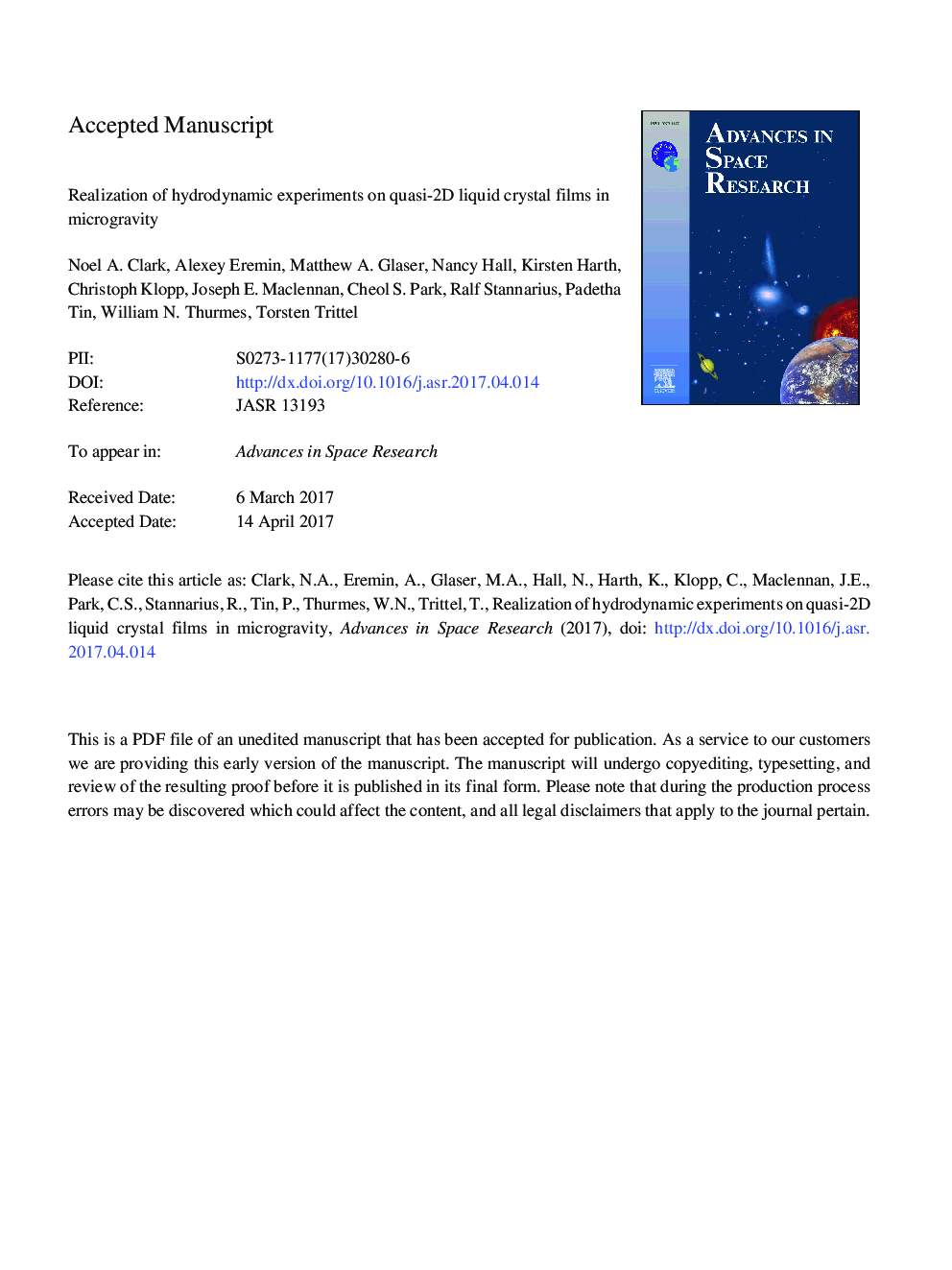| Article ID | Journal | Published Year | Pages | File Type |
|---|---|---|---|---|
| 5486478 | Advances in Space Research | 2017 | 28 Pages |
Abstract
Freely suspended films of smectic liquid crystals are unique examples of quasi two-dimensional fluids. Mechanically stable and with quantized thickness of the order of only a few molecular layers, smectic films are ideal systems for studying fundamental fluid physics, such as collective molecular ordering, defect and fluctuation phenomena, hydrodynamics, and nonequilibrium behavior in two dimensions (2D), including serving as models of complex biological membranes. Smectic films can be drawn across openings in planar supports resulting in thin, meniscus-bounded membranes, and can also be prepared as bubbles, either supported on an inflation tube or floating freely. The quantized layering renders smectic films uniquely useful in 2D fluid physics. The OASIS team has pursued a variety of ground-based and microgravity applications of thin liquid crystal films to fluid structure and hydrodynamic problems in 2D and quasi-2D systems. Parabolic flights and sounding rocket experiments were carried out in order to explore the shape evolution of free floating smectic bubbles, and to probe Marangoni effects in flat films. The dynamics of emulsions of smectic islands (thicker regions on thin background films) and of microdroplet inclusions in spherical films, as well as thermocapillary effects, were studied over extended periods within the OASIS (Observation and Analysis of Smectic Islands in Space) project on the International Space Station. We summarize the technical details of the OASIS hardware and give preliminary examples of key observations.
Keywords
Related Topics
Physical Sciences and Engineering
Earth and Planetary Sciences
Space and Planetary Science
Authors
Noel A. Clark, Alexey Eremin, Matthew A. Glaser, Nancy Hall, Kirsten Harth, Christoph Klopp, Joseph E. Maclennan, Cheol S. Park, Ralf Stannarius, Padetha Tin, William N. Thurmes, Torsten Trittel,
